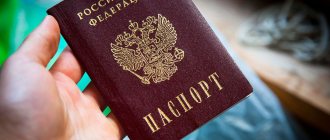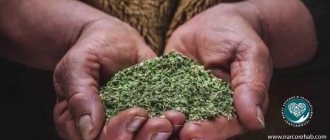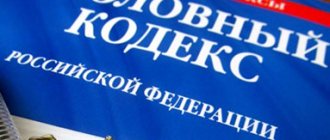New edition of Art. 258 of the Criminal Code of the Russian Federation
1. Illegal hunting, if this act is committed:
a) causing major damage;
b) using a mechanical vehicle or aircraft, explosives, gases or other methods of mass destruction of birds and animals;
c) in relation to birds and animals, hunting of which is completely prohibited;
d) in a specially protected natural area or in a zone of environmental disaster or in a zone of environmental emergency, -
shall be punishable by a fine in the amount of up to five hundred thousand rubles, or in the amount of the wages or other income of the convicted person for a period of up to two years, or by correctional labor for a term of up to two years, or by imprisonment for a term of up to two years.
2. The same act, committed by a person using his official position, or by a group of persons by prior conspiracy or by an organized group, or which caused especially large damage, -
shall be punishable by a fine in the amount of five hundred thousand to one million rubles, or in the amount of the wages or other income of the convicted person for a period of three to five years, or by imprisonment for a term of three to five years, with deprivation of the right to hold certain positions or engage in certain activities for a term of up to three years or without it.
Note : In this article, large damage is recognized as damage calculated according to the rates and methodology approved by the Government of the Russian Federation, exceeding forty thousand rubles, especially large - one hundred twenty thousand rubles.
Commentary on Article 258 of the Criminal Code of the Russian Federation
1. Illegal hunting is a deliberate socially dangerous act of tracking for the purpose of hunting, pursuing and obtaining wild animals (birds) in a state of natural freedom, by a person who does not have the right to do so or who uses prohibited means or methods for this. Hunting also takes place if a person is in the hunting grounds with weapons, dogs, birds of prey, traps or other hunting tools, or with hunted products (see also clause 10 of the Regulations on Hunting and Game Management of the RSFSR, approved by the Resolution Council of Ministers of the RSFSR dated October 10, 1960 N 1548 (as amended on December 19, 1994) <1>). ——————————— <1> SP RSFSR. 1960. N 34. Art. 164; SAPP RF. 1992. N 2. Art. 39; NW RF. 1994. N 3. Art. 221, N 35. Art. 3709.
2. The public danger of illegal hunting lies in undermining the environmental safety of society and causing damage to the animal world.
Part 1 comment. Article defines the main, and part 2 - qualified elements of crime, describing socially dangerous acts that fall into the category of intentional crimes of minor gravity.
3. The main objects of criminal encroachment are: the environmental safety of society, ensured by the protection of the animal world, its rational use, reproduction and provision of the required number of wild animals, and the preservation of ecological balance on Earth; the vitality of the animal world in all its diversity.
4. Subjects of illegal hunting are wild game animals and birds in a state of natural freedom.
5. The objective side of the crime is expressed in the form of the action: a) obtaining hunting products (fur raw materials, skins, meat of wild animals and birds) by unauthorized means; b) hunting during prohibited periods, in prohibited places (outside designated areas), with unauthorized tools, without proper permission (with the exception of unarmed hunting for gophers, hamsters, water and barn rats, as well as moles) (see. clauses 12 - 16, 30 of the Regulations on Hunting and Game Management of the RSFSR), contrary to a special ban or with a permit, but with shooting, catching, harvesting of animals and birds in excess of the number specified in the license (permit); c) hunting by a person who does not have the right to hunt or who received a license without the necessary grounds (paragraph 2, paragraph 12 of the Resolution of the Plenum of the Armed Forces of the Russian Federation of November 5, 1998 N 14). In this case, the circumstances specified in Part 1 of the comment must be present. articles. Otherwise, the actions are qualified as an administrative offense (Article 8.37 of the Administrative Code).
5.1. Prohibited methods of hunting - driving animals through crust, deep snow, driving them onto smooth ice, burning vegetation in places where animals are concentrated, hunting wild animals from under headlights or using other lighting devices, hunting waterfowl from boats or motor boats with the engine not turned off etc. (see, for example, Model Rules of Hunting in the RSFSR, approved by Order of the Chief Hunting Authority of the RSFSR dated January 4, 1988 N 1).
5.2. Hunting during prohibited periods - shooting, catching wild animals (birds) within deadlines not established by regulations (see, for example: Model rules of hunting in the RSFSR; Resolution of the Council of Ministers of the RSFSR dated January 20, 1970 N 48 “On the prohibition of spring hunting for game birds "<1>; Resolution of the Council of Ministers of the RSFSR dated September 20, 1967 N 719 “On the timing of muskrat hunting” <2>; Resolution of the Council of Ministers of the RSFSR dated October 14, 1961 N 1300 “On the timing of sable hunting” <3>). ——————————— <1> SP RSFSR. 1970. N 4. Art. 21.
<2> SP RSFSR. 1967. N 23. Art. 132.
<3> SP RSFSR. 1961. N 28. Art. 126.
5.3. Hunting in prohibited places - shooting, catching wild animals (birds) in nature reserves, wildlife sanctuaries, populated areas and green areas around them, in other places where hunting is prohibited by legal regulations.
5.4. Prohibited hunting weapons include small-caliber rifles (with the exception of those for commercial hunting), pneumatic weapons, pesticides for hunting wild animals (with the exception of hunting wolves, ground squirrels, hamsters, mouse-like rodents, and in places of rabies epizootics - foxes and raccoon dogs in order, established by the relevant instructions), nets, vents, loops, tents, overhangs, hooks, etc.
5.5. Hunting without proper permission - tracking, stalking, hunting wild animals and birds without a hunting license, with an expired ticket or issued to another person, shooting without a license of species of wild ungulates permitted for shooting, hunting licensed fur-bearing animals without an agreement with a fur procurement organization or a work order (for full-time hunters), hunting in areas assigned to state, cooperative and public organizations, without a voucher or written permission from the administration of the hunting farm on whose territory the hunting is carried out (see Model rules for hunting in the RSFSR).
5.6. License - a permit issued by authorized hunting authorities to persons who have the right to hunt for the removal of wild animals (birds) from the natural environment that are in a state of natural freedom. The list of objects, groups of objects of the animal world and the maximum fees for the use of objects of the animal world classified as hunting objects, the removal of which from the habitat is carried out under licenses or permits, are established by Art. 333.3 parts of the second Tax Code.
6. Hunting grounds include all land, forest and water-covered areas that serve as habitat for wild animals and birds and can be used for hunting (see Regulations on Hunting and Game Management of the RSFSR).
7. The right to hunt with hunting firearms is enjoyed by all citizens of the Russian Federation who have reached the age of 18, who have passed tests on the rules of hunting, safety precautions in hunting, handling of hunting firearms and who have paid the state fee in the prescribed amount. Citizens inhabiting areas of the Far North and equivalent areas enjoy the right to hunt with hunting firearms from the age of 14. The certificate for the right to hunt is a hunting license with a mark on passing tests on hunting rules, safety precautions during hunting, handling of hunting firearms and payment of state duty (citizens inhabiting areas of the Far North and areas equivalent to them are exempt from the latter). A hunting license is issued at the place of permanent residence for a period of five years and is subject to mandatory annual registration with the issuing authorities until March 31. A hunting license for a foreign hunter is issued at the location of the hunt for the duration of the contract or invitation to hunt. Gunless hunting for moles, hamsters, gophers, water and barn rats is permitted to all citizens, regardless of age, without obtaining a hunting license. The fight against poaching, as well as the extermination of harmful predators, as well as the protection of useful wild animals and birds, promoting their breeding are the responsibility of the hunter (see Regulations on Hunting and Game Management of the RSFSR; Instructions on the procedure for issuing hunting tickets and registering hunters on the territory of the Russian Federation, approved by Order of the Ministry of Agriculture and Food of Russia dated May 25, 1998 N 302 <1>). ——————————— <1> BNA. 1998. N 18.
8. The disposition of the article is of a reference-blanket nature, i.e. To determine the criminality of an act and its proper qualification, it is necessary to refer to other laws and by-laws. Such standards are, for example: the Law on Animal World; Decree of the Government of the Russian Federation of July 26, 1993 N 728 “On amateur and sport hunting in the Russian Federation” <1>; Regulations on hunting and game management of the RSFSR; hunting rules, approved. local authorities (which may contain additional requirements to prohibit tools, methods of hunting, places and times, additionally regulate hunting objects, etc.). ——————————— <1> SAPP RF. 1993. N 31. Art. 2991.
9. According to the legislative structure, the elements of the crime are formal and material. The crime is completed (by composition) at the time of the commission of illegal hunting: a) with the use of mechanical vehicles or aircraft, explosives, gases, other methods of mass destruction of birds or animals, as well as with the use of official position; b) in relation to birds or animals, the hunting of which is completely prohibited, on the territory of a reserve, wildlife sanctuary, in an environmental disaster zone or in an environmental emergency zone, by prior agreement by a group of persons or an organized group.
9.1. The formal corpus delicti occurs at the moment of the beginning of tracking, pursuing, catching animals or birds in a state of natural freedom, regardless of whether these animals were actually caught (in the presence of the circumstances listed in paragraphs “b” - “d” h . 1). In the absence of these circumstances, another violation of hunting rules is possible - an administrative offense (Article 8.37 of the Code of Administrative Offences), which can develop into a crime with a material element - if the actions of the guilty person cause major damage to the animal world.
That is why the construction of the elements of a crime is considered formal and material. The material elements of a crime occur only in the presence of real damage (clause 17 of the Resolution of the Plenum of the Armed Forces of the Russian Federation of November 5, 1998 N 14).
10. Major damage is determined on the basis of cost, ecological value, quantity killed, prevalence of animals, their classification into special categories (rare and endangered species), significance of animals for a specific habitat, hunting area, as well as the amount of damage generally caused to the animal world . For example, damage caused by the shooting of bison, elk, deer, other animals or birds listed in the Red Book is recognized as such (see paragraph 16 of the Resolution of the Plenum of the Armed Forces of the Russian Federation dated November 5, 1998 N 14).
10.1. In a general sense, material damage is calculated according to special Taxes, approved. Order of the Ministry of Natural Resources of Russia dated 04.05.1994 N 126, Order of the Ministry of Agriculture of Russia dated 25.05.1999 N 399 <1>, as well as the actual costs of compensation for damage caused to objects of the animal world and their habitat, taking into account losses incurred, including lost profits (see Article 56 of the Law on Animal World). ——————————— <1> BNA. 1999. N 29.
11. Objects of wildlife removed from the natural environment in violation of the legislation of the Russian Federation are confiscated free of charge or confiscated from the owner and returned to their habitat. If the physical condition of the animal does not allow its return to its habitat, it is subject to sale in the manner established by the civil legislation of the Russian Federation, with compensation to the state for damage caused to the animal world by illegal seizure. Parts of objects of the animal world, products made from them, tools and means (including transport) directly used for the illegal acquisition of objects of animal world are also subject to gratuitous seizure or confiscation (see Article 56 of the Law on Animal World; paragraph 19 of the Resolution of the Plenum RF Armed Forces dated 05.11.1998 N 14).
11.1. Detected illegal hunting products are subject to confiscation and transfer to procurement organizations in accordance with the relevant acts. Products of illegal hunting are recognized as: a) fur raw materials, skins, meat and other hunting products obtained by illegal methods, in periods prohibited for hunting or in prohibited places; b) all hunting products obtained at any time by persons who do not have a hunting license, with the exception of the skins of gophers, hamsters, water and barn rats, moles; c) fur raw materials, skins and meat of wild animals and birds that are prohibited for hunting or harvested in excess of established standards (see Regulations on Hunting and Game Management of the RSFSR).
12. Qualification of a socially dangerous act as a crime under paragraph “b”, part 1 comment. Article is carried out if it is committed with the use of a mechanical vehicle or aircraft, explosives, gases or other methods of mass destruction of birds and animals.
12.1. A mechanical vehicle is any vehicle, other than a moped, driven by an engine, adapted to move a person (including tractors, self-propelled vehicles, boats, motor boats, helicopters, etc.). The use of mechanical vehicles means their use directly in the hunting process when tracking, driving, pursuing animals and birds <1>. If the guilty person unlawfully used someone else’s vehicle for illegal hunting, then his actions, if there are grounds, should be qualified under the totality of Art. 258 and 166. ——————————— <1> BVS RSFSR. 1991. N 4. P. 5 - 6.
12.2. An aircraft is a type of vehicle capable of movement in any way in the atmospheric layers, used to move someone (something).
12.3. Explosive - chemical compounds or mixtures capable, under the influence of an external impulse (impact, heat, etc.) of a self-propagating chemical reaction at high speed (km/s) with the formation of gaseous products and the release of heat <1>. ——————————— <1> See: Soviet Encyclopedic Dictionary. M., 1989. P. 218.
12.4. Gas is a state of aggregation of a substance in which the kinetic energy of the thermal movement of its particles (molecules, atoms, ions) significantly exceeds the potential energy of interactions between them, and therefore the particles move freely, uniformly filling in the absence of external fields the entire volume provided to them <1> . ——————————— <1> See: Ibid. P. 267.
An explosive substance or gas is considered to be used from the moment of its actual use in the process of illegal hunting.
12.5. Other methods of mass extermination of birds and animals include placing nets, scarring, burning vegetation, as well as the use of automatic firearms, light and sound devices, etc., the use of which leads to the death of a significant number of wild animals (birds).
13. Illegal hunting of birds and animals, the hunting of which is completely prohibited, is qualified under clause “c”, part 1 comment. articles.
13.1. Animals for which hunting is generally prohibited include: bison, sika deer in their natural range, tiger, leopard, snow leopard, polar bear (except as provided for in the Polar Bear Conservation Agreement), red wolf, Asian river beaver , swan, migratory birds (their nests and eggs) in accordance with the international convention, goral, gazelle, bezoar goat, other animals and birds listed in the Red Book of the Russian Federation (for more details, see: Resolutions of the Council of Ministers of the RSFSR dated April 11, 1979 N 196 " On measures to protect migratory birds and their habitat" <1>; dated 04/11/1975 N 229 "On the protection of migratory birds and endangered birds and their habitat" <2>; Resolution of the Council of Ministers of the USSR dated 04.12. 1975 N 986 “On measures to ensure the implementation of the Agreement on the Conservation of Polar Bears of November 15, 1973” <3>; Model hunting rules in the RSFSR). ——————————— <1> SP RSFSR. 1979. N 11. Art. 70.
<2> SP RSFSR. 1975. N 9. Art. 53.
<3> SP USSR. 1976. N 1. Art. 2.
14. Point “d” part 1 comment. Article indicates the commission of illegal hunting in a reserve, wildlife sanctuary, zone of environmental disaster or zone of environmental emergency. In this case, the place where the crime was committed is specified and is included in the category of mandatory signs of the objective side of the crime.
14.1. About the reserve, see paragraph 6 - 6.1 comments. to Art. 262.
14.2. About the reserve, see paragraph 7 - 7.1 comments. to Art. 262.
14.3. For information about the environmental disaster zone, see paragraph 10.2 of the commentary. to Art. 247.
14.4. For information on the environmental emergency zone, see paragraph 10.3 of the commentary. to Art. 247.
15. In part 2 comments. The article reveals such qualifying characteristics as the commission of illegal hunting: a) by a person using his official position; b) by a group of persons by prior conspiracy; c) an organized group.
15.1. For information about illegal hunting involving a person’s use of his official position, see paragraph 13.1 of the commentary. to Art. 256.
15.2. Abuse of official powers or the powers of a person performing managerial functions in a commercial or other organization during illegal hunting does not require additional qualifications under Art. 285 or 201. Here it is enough to use Part 2 of Art. 258 (see paragraph 10 of the Resolution of the Plenum of the Armed Forces of the Russian Federation dated November 5, 1998 N 14). For example, if the poacher is an official of the hunting supervision authorities who abuses his powers, his actions must be qualified under Part 2 of Art. 258 in the absence of signs of another crime related to his official position. It does not matter here whether the guilty person personally carried out the illegal hunting or contributed to the commission of this crime by others. In the latter case, the qualification of the crime must be supplemented by Part 5 of Art. 33.
15.3. On the preliminary conspiracy of a group of persons, see paragraph 13.3 of the commentary. to Art. 256.
15.4. For information about the organized group, see paragraph 13.4 of the commentary. to Art. 256.
16. Illegal production of wild animals (birds) raised by various enterprises or organizations in specially designed or adapted places, or the taking of wild animals (birds) located in nurseries and enclosures, should be qualified as theft of someone else’s property (clause 18 of the Resolution of the Plenum of the Armed Forces of the Russian Federation dated 05.11.1998 N 14).
17. The subjective side of the crime is characterized by guilt in the form of intent, in which the guilty person is aware of the illegality of his actions and wants to commit them, and in some cases foresee the possibility or inevitability of causing major damage. It does not matter whether the intent of the perpetrator to cause large damage was clearly defined or whether the attitude of the perpetrator to the infliction of the alleged harm was indifferent. The motive and purpose do not affect the qualification of a socially dangerous act as a crime. At the same time, illegal hunting, as a rule, is committed for selfish reasons.
18. A subject of illegal hunting is a sane individual who has reached the age of 16 at the time of committing the crime.
Commentary on Article 258 of the Criminal Code of the Russian Federation
The object of the crime is relations for the protection and rational use of wild animals. Federal Law of March 22, 1995 N 52-FZ “On the Animal World” <1> establishes that relations in the field of hunting and game management are regulated by this Federal Law and other federal laws and other regulatory legal acts of the Russian Federation adopted in accordance with it , as well as laws and other regulatory legal acts of the constituent entities of the Russian Federation. These acts must be referenced when deciding on criminal liability in each specific case.
——————————— <1> NW RF. 1995. N 17. Art. 1462.
Such acts, in addition to the Law “On Wildlife,” primarily include: Federal Law of January 10, 2002 N 7-FZ “On Environmental Protection” <1>, containing general provisions; LC RF (Articles 36, 37), Decree of the Government of the Russian Federation of July 26, 1993 N 728 “On amateur and sport hunting in the Russian Federation” <2>; Order of the Ministry of Agriculture of Russia dated December 24, 1993 N 315 “On granting the right to hunt” <3>; hunting rules contained in the legislation and other regulations of the constituent entities of the Russian Federation.
——————————— <1> NW RF. 2002. N 2. Art. 133. <2> SAPP RF. 1993. N 31. Art. 2991. <3> Bulletin of normative acts of federal executive authorities. 1994. N 5; 1998. N 18; 1999. N 10.
The subject of the crime is wild animals and birds living in a state of natural freedom in hunting grounds, as well as those released for breeding purposes.
Taking possession of animals kept in cages, enclosures, fenced areas, zoos, circuses or in the possession of citizens is qualified as theft of someone else's property (clause 18 of the Resolution of the Plenum of the Supreme Court of the Russian Federation of November 5, 1998 No. 14 “On the practice of application by courts of legislation on responsibility for environmental violations" <1>), and shooting or other killing of such animals and birds is considered the deliberate destruction of someone else's property (see commentary to Articles 167, 168 of the Criminal Code of the Russian Federation).
——————————— <1> Bulletin of the Supreme Court of the Russian Federation. 1999. N 1.
Hunting is the tracking for the purpose of production, pursuit and the production of wild animals and birds. Hunting in violation of established rules is considered illegal and entails criminal or administrative liability.
From the objective side, criminal illegal hunting in the sense of the article being commented on is constituted only by a violation of hunting rules if the actions of the perpetrator contain at least one of the elements specified in this article.
Signs of illegal hunting are hunting without proper permission or in prohibited places, or at prohibited times, or with prohibited tools and methods.
The right to hunt is regulated by Art. Art. 36 - 37 of the LC RF and the above-mentioned Order of the Ministry of Agriculture of Russia “On granting the right to hunt”.
Hunting in forest areas provided for hunting is carried out in accordance with the Federal Law “On Wildlife” and the LC RF. Forest areas for hunting are provided for use on the basis of lease agreements. At the same time, the rules for using forests for hunting are established by the legislation of the constituent entities of the Russian Federation (Article 36 of the LC RF). The use of forests for hunting is a type of entrepreneurial activity. Citizens can carry out amateur and sport hunting in forests in accordance with Art. 11 of the RF LC without providing forest areas for use (Article 37 of the RF LC) with the restrictions established by Art. 27 LC RF.
The right to hunt with firearms is enjoyed by all citizens of the Russian Federation who have reached the age of eighteen, who are members of a hunting society, who have passed the minimum hunting test, who have paid a fee for the use of wildlife in the form of a license fee, deductions from membership fees to hunter societies, etc.
Hunting without proper permission is recognized as: hunting without a hunting license or with an expired ticket; hunting by a person who does not have the right to hunt or who received a license without the necessary grounds; unlicensed hunting; hunting without an agreement with procurement and hunting business entities for the delivery of meat and furs. Hunting of an animal or bird in excess of the norm established in the hunting rules, contract or license, or of species other than those for which a permit has been issued, is also considered hunting without a permit.
The list of fauna objects classified as hunting objects, based on their numbers, status, traditions of use, types and quality of products obtained, is compiled by a specially authorized state body for the protection, control and regulation of the use of fauna objects in agreement with the executive authorities of the constituent entities of the Russian Federation and approved by the Government of the Russian Federation. The list of fauna objects classified as hunting objects was approved by Decree of the Government of the Russian Federation of December 26, 1995 N 1289 (as amended on July 30, 1998) <1>.
——————————— <1> NW RF. 1996. N 2. Art. 120; N 49. Art. 5598; 1998. N 32. Art. 3904.
Animals, although listed in this List, are included in the Red Book of the Russian Federation and are not considered objects of hunting.
Other types of use of animals listed in the Red Book of the Russian Federation (for scientific purposes, for breeding, restoration of numbers, etc.) are regulated by Decree of the Government of the Russian Federation of January 6, 1997 N 13 “On approval of the rules for obtaining objects of the animal world belonging to species listed in the Red Book of the Russian Federation" (as amended) <1>. Order of the State Committee for Ecology of Russia dated December 19, 1997 N 569 (as amended on September 9, 2004) approved the Lists (lists) of fauna objects included in the Red Book of the Russian Federation and excluded from the Red Book of the Russian Federation <2>.
——————————— <1> NW RF. 1997. N 3. Art. 385; 2003. N 17. Art. 1621. <2> Bulletin of normative acts of federal executive authorities. 1998. N 5; 2000. N 8; 2004. N 40.
Places prohibited for hunting include the territories of nature reserves, nature reserves, green areas around cities and other populated areas, areas of industrial enterprises, transport routes, as well as other places prohibited by relevant acts. The list and boundaries of places prohibited for hunting, as well as hunting grounds, indicating their departmental affiliation, is given in the appendix to the hunting rules, approved separately for each subject of the Russian Federation.
Hunting during prohibited periods is hunting at a time when all hunting is prohibited, or during periods prohibited for the hunting of certain species of birds and animals.
Lists of prohibited tools and methods of hunting are set out in the Decree of the Government of the Russian Federation “On the rules, terms and lists of tools and methods of obtaining wildlife objects permitted for use” <1>, as well as in the hunting rules. For example, shooting fires, using military and sporting weapons, using nets, hunting “from under headlights,” and hunting animals in distress are universally prohibited. Depending on local conditions, these lists may be slightly narrowed or expanded.
——————————— <1> NW RF. 1996. N 31. Art. 3750. <2> Bulletin of normative acts of federal executive authorities. 1999. N 29.
When deciding whether the damage caused by illegal hunting is major, it is necessary to proceed from the explanations of the Resolution of the Plenum of the Supreme Court of the Russian Federation of November 5, 1998 No. 14 (see commentary to Article 256 of the Criminal Code of the Russian Federation). In particular, damage caused by illegal hunting of bison, elk, and deer should be recognized as major.
Illegal hunting that caused major damage is formulated by the legislator as a material element. To recognize the crime as completed in this case, real damage must be caused. If a person, while engaged in illegal hunting, due to circumstances beyond his control, was unable to achieve results, the act constitutes an attempt at illegal hunting on the basis of major damage.
The cost of animals when calculating damage is determined at special rates approved by the Government of the Russian Federation. The current rates are for calculating the amount of penalties for damage caused to legal entities and individuals by the illegal extraction or destruction of wildlife objects classified as hunting objects, approved by Order of the Ministry of Agriculture of Russia dated May 25, 1999 N 399. The rates provide for the amount of penalties calculated in the amount a multiple of the minimum wage at the time the crime was committed. If the damage is caused on the territory of a state reserve or wildlife sanctuary, then the multiplicity factors indicated in the rates must be doubled. For the destruction of muskrat and beaver burrows, damage is calculated at three times the amount per individual, which should be taken into account when determining major damage.
A mechanical vehicle should be understood as cars, motorcycles, boats, motor boats and other vehicles driven by an engine.
The term also applies to any tractors, electric, construction and other self-propelled vehicles specified in the Traffic Rules of the Russian Federation, approved by Decree of the Government of the Russian Federation of October 23, 1993 N 1090 with subsequent numerous amendments <1>.
——————————— <1> SAPP RF. 1993. N 47. Art. 4531; NW RF. 1996. N 3. Art. 184; 1998. N 45. Art. 5521; 2000. N 18. Art. 1985; 2001. N 11. Art. 1029; 2002. N 9. Art. 931; N 27. Art. 2693; 2003. N 20. Art. 1899; 2003. N 40. Art. 3891; 2005. N 12. Art. 5733; 2006. N 11. Art. 1179.
Aircraft include airplanes, helicopters and other aircraft.
The concepts of using vehicles, as well as methods of mass destruction of birds and animals are similar to those discussed in the commentary to Art. 256 of the Criminal Code of the Russian Federation.
A complete ban means a ban on all types of hunting (commercial, sport, amateur) for certain species of birds and animals at any time of the year due to their special value. A list of such rare and endangered animals is given in the hunting rules. It is also prohibited to hunt birds and animals listed in the Red Book of the Russian Federation.
On the procedure for issuing permits (administrative licenses) for the circulation of wild animals belonging to species listed in the Red Book of the Russian Federation, see Decree of the Government of the Russian Federation of February 19, 1996 N 156 (as amended on December 14, 2004) <2 >.
——————————— <2> NW RF. 1996. N 9. Art. 807; 2003. N 17. Art. 1621; 2004. N 51. Art. 5188.
The concept of a reserve, a wildlife sanctuary, zones of environmental disaster and zones of environmental emergency, see the commentary to Art. 247 and art. 262 of the Criminal Code of the Russian Federation.
A person’s use of his or her official position means the use of the rights and powers vested in a person by service or work to engage in illegal hunting, for example, by employees of hunting control bodies, heads of procurement organizations, hunting management bodies, and representatives of the executive branch administration.
Illegal hunting committed by a person using his official position, additional qualifications under Art. Art. 201, 285 of the Criminal Code of the Russian Federation does not require it, since the deed is covered by Part 2 of the commented article.
For the concept of a group of persons by prior conspiracy and an organized group, see the commentary to Art. 35 of the Criminal Code of the Russian Federation.
A crime (with the exception of illegal hunting that caused major damage) is considered completed from the moment the tracking or pursuit of birds and animals begins, regardless of whether they were caught (clause 17 of the Resolution of the Plenum of the Supreme Court of the Russian Federation of November 5, 1998 N 14) <1 >.
——————————— <1> Bulletin of the Supreme Court of the Russian Federation. 1999. N 1.
From the subjective side, a crime is committed with direct intent. The person is aware of the public danger of illegal hunting and wants to do it. In the event of major damage, he wishes for this consequence to occur.
The general subject of the crime is a sane person who has reached the age of sixteen.
Article 258 of the Criminal Code of the Russian Federation. Illegal hunting
1. The subject of the crime is wild animals and birds in their natural state, as well as those released for the purpose of breeding them.
2. Hunting is illegal if it is carried out:
- without appropriate permission;
- contrary to a special prohibition;
- a person who does not have the right to hunt or who received permission without the necessary grounds;
- outside designated areas, at prohibited times, using prohibited tools and methods.
Lack of proper hunting permission means:
- hunting without a hunting agreement or permit, without a hunting license or with an expired ticket or a ticket issued to another person;
- shooting of an animal or bird in excess of the established norm or other species not provided for by the agreement or voucher, etc.
Prohibited hunting areas are provided for by regulatory legal acts. Prohibited periods are the times when either all hunting is prohibited, or there is a ban on the hunting of certain species of birds and animals. The list of prohibited weapons and methods is also specified in the regulations governing hunting rules.
Major damage as a consequence of the crime in question is established by the court for each specific case based on the cost, quantity of the kill, the prevalence of animals, their environmental value, etc.
On the use of a motor vehicle or aircraft, see the commentary to Art. 256 of the Criminal Code.
The concepts of a motor vehicle and an aircraft are given in the analysis of crimes, respectively, under Art. Art. 263 and 264 of the Criminal Code.
For the characteristics of the mass destruction of birds and animals, see the commentary to Art. 256 of the Criminal Code.
The list of birds and animals, hunting of which is completely prohibited, is contained in regulatory legal acts.
Specially protected natural areas are understood as areas of land, water surface and air space above them, where natural complexes and objects are located that have special environmental, scientific, cultural, recreational and health value, withdrawn completely or partially from economic use and having a special protection regime ( Federal Law of March 14, 1995 N 33-FZ “On Specially Protected Natural Areas”).
For the concepts of “ecological disaster zone” and “ecological emergency zone”, see the commentary to Art. 247 of the Criminal Code.
3. The structure of the crime is similar to the structure of illegal extraction (catch) of aquatic biological resources (Article 256 of the Criminal Code), and the moment of its end is also determined.
4. From the subjective side, the crime is characterized by direct intent.
5. The subject of the crime is a person who has reached the age of 16.
6. In part 2 of Art. 258 the following qualifying characteristics are indicated:
- a) commission of a crime by a person using his official position;
- b) by a group of persons by prior conspiracy;
- c) an organized group.
Their content is similar to the content of the same signs of a crime provided for in Part 3 of Art. 256 of the Criminal Code.







